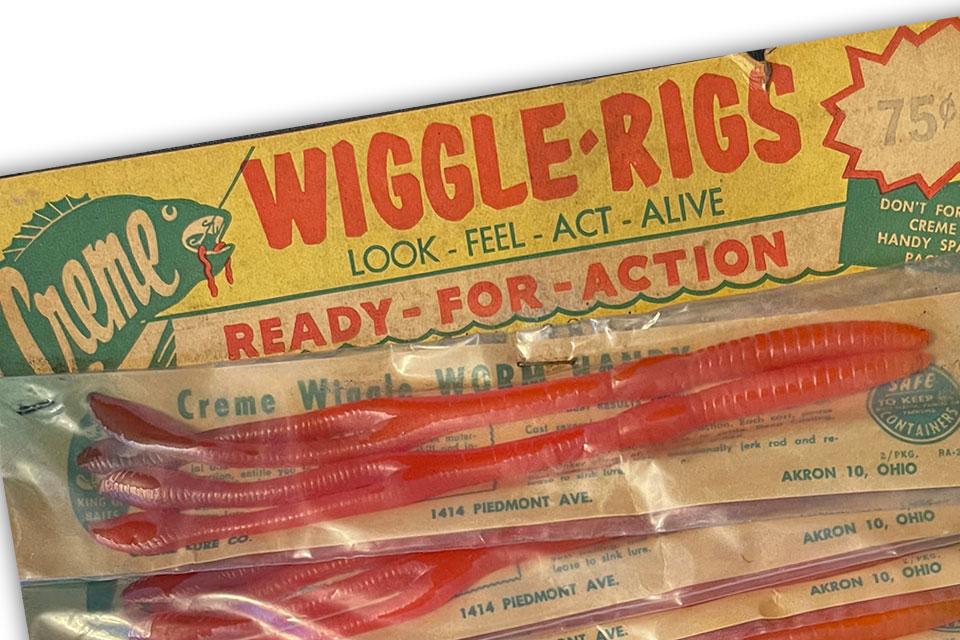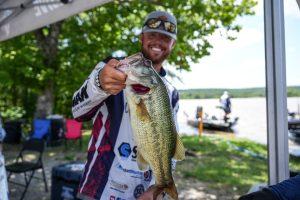By Ken Duke
It’s a safe bet that no other lure type in history has caught more bass than the plastic worm. And it’s an even safer bet that more plastic worms have been made and sold than any other lure type.
Let’s take a quick look at the history of fishing’s greatest bass catcher.
Most historians trace the history of the first soft plastic worm back to Nick Creme (1910-1984) an Akron, Ohio lure maker, in 1949. He and his wife (Cosma) started Creme Lure Company by heating plastic on their kitchen stovetop and pouring it into molds to create 6- and 8-inch soft baits that would eventually revolutionize bass fishing.
Creme experimented with various formulas until he came up with the recipe for a vinyl worm that was pliable and moved like a living thing. Before Creme, “rubber” worms were stiff and lacked action.
The first soft plastic worm that Creme took to market was the “Wiggle Worm.” Creme Lures still makes the Wiggle Worm, but for many years it’s been known as the “Scoundrel.”
The Wiggle Worm came rigged on a monofilament harness, complete with weedless hooks and a small propeller in front. It looked more like a toy than a serious bass lure. Nonetheless, it sold reasonably well.
It wasn’t until the early 1960s that the plastic worm took its rightful place on the throne of bass baits. That’s when anglers in east Texas (we’ll probably never know exactly who they were) developed a method of rigging the Wiggle Worm that was self-weedless and allowed them to fish cover that was previously untouched by most bassers.
Their success was so great and Creme sales were so concentrated in that area, that Nick and Cosma moved their operation to Tyler, Texas, where it remains to this day even the Cremes are long gone and the company is under different ownership.
The plastic worm had several advantages over other baits that it still enjoys today.
First, when rigged “Texas style” it mostly avoids snags. In fact, for many, “Texas style” is synonymous with “weedless.” It entails inserting the hook in the head of the worm, sliding the worm up the shank of the hook and then turning the hook around so that the point is buried in the soft plastic. Since the point is not exposed, it mostly stays out of trouble until the angler sets the hook.
Second, plastic worms are relatively cheap … at least when compared to most hard baits. As a result, anglers are more willing to throw them into harm’s way — heavy cover where bass often live and feed.
Third, a true Texas rig requires the use of a slip sinker. Early Texas riggers would cut barrel sinkers in half or modify dipsey-style swivel sinkers to create a weight that would slide up and down the line. With such a sinker in place, it was standard to keep the bait on the bottom and to crawl or hop it slowly.
All these factors helped make the plastic worm successful, and the Texas rig still catches millions of bass every year. Dozens of other worm rigs have been developed since that time, as anglers search for newer and better presentations.
All of them work … sometimes. It seems there are no “bad” ways to fish a plastic worm.





